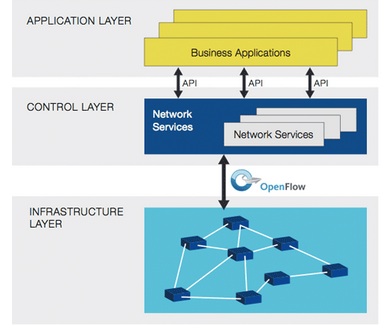Your SD-WAN Solutions Partner
What is Software Defined Networking (SDN)?
The goal of Software-Defined Networking (SDN) is to enable cloud computing and network engineers and administrators to respond quickly to changing business requirements via a centralized control console.
SDN encompasses multiple kinds of network technologies designed to make the network more flexible and agile to support the virtualized server and storage infrastructure of the modern data center.
Software-defined networking originally defined an approach to designing, building, and managing networks that separates the network’s control or SDN network policy (brains) and forwarding (muscle) planes thus enabling the network control to become directly programmable and the underlying infrastructure to be abstracted for applications and network services for applications as SDN cloud computing or mobile networks.
SDN and SD-WAN
Software-defined wide-area network (SD-WAN) is an extension of SDN. SD-WAN applies SDN to networking connections that cover a wide geographical area.
This technology allows enterprise to connect all their networks within their system across a wide geographic area.
For instance, all the branch office networks and data centers within an enterprise are connected via SD-WAN. More organizations and companies are turning toward SD-WAN due to this ability to unify the various connections.
Another perk to SD-WAN is that it provides end-to-end encryption across the network and thus increases security.
How Does Software-Defined Networking Work?
Software-defined networking providers offer a wide selection of competing architectures, but at its most simple, the software-defined networking method centralizes control of the network by separating the control logic to off-device computer resources.
All software-defined network solutions have some version of an SDN Controller, as well as southbound APIs and northbound APIs:
* Controllers: The “brains” of the network, SDN Controllers offer a centralized view of the overall network, and enable network administrators to dictate to the underlying systems (like switches and routers) how the forwarding plane should handle network traffic.
* Southbound APIs: Software-defined networking uses southbound APIs to relay information to the switches and routers “below.”
OpenFlow, considered the first standard in SDN, was the original southbound API and remains as one of the most common protocols.
Despite some considering OpenFlow and SDN to be one in the same, OpenFlow is merely one piece of the bigger landscape.
* Northbound APIs: Software-Defined Networking uses northbound APIs to communicates with the applications and business logic “above.”
These help network administrators to programmatically shape traffic and deploy services.
The Business Benefits of Software-Defined Network Solutions
SDN offers a centralized, programmable network that can dynamically provision so as to address the changing needs of businesses.
It also provides the following technical and business benefits:
* Directly Programmable: SDN network policy is directly programmable because the control functions are decoupled from forwarding functions, which enables the network to be programmatically configured by proprietary or open source automation tools, including OpenStack, Puppet, and Chef.
* Centralized Management: Network intelligence is logically centralized in an SDN controller software that maintains a global view of the network, which appears to applications and SDN network policy engines as a single, logical switch.
* Reduce CapEx: Software-Defined Networking potentially limits the need to purchase purpose-built, ASIC-based networking hardware, and instead supports pay-as-you-grow models.
* Reduce OpEX: SDN enables algorithmic control of the network of network elements (such as hardware or software switches/routers) that are increasingly programmable, making it easier to design, deploy, manage, and scale networks.
* The ability to automate provisioning and orchestration optimizes service availability and reliability by reducing overall management time and the chance for human error.
* Deliver Agility and Flexibility: Software-Defined Networking helps organizations rapidly deploy new applications, services, and infrastructure to quickly meet changing business goals and objectives.
* Enable Innovation: SDN enables organizations to create new types of applications, services, and business models that can offer new revenue streams and more value from the network.

